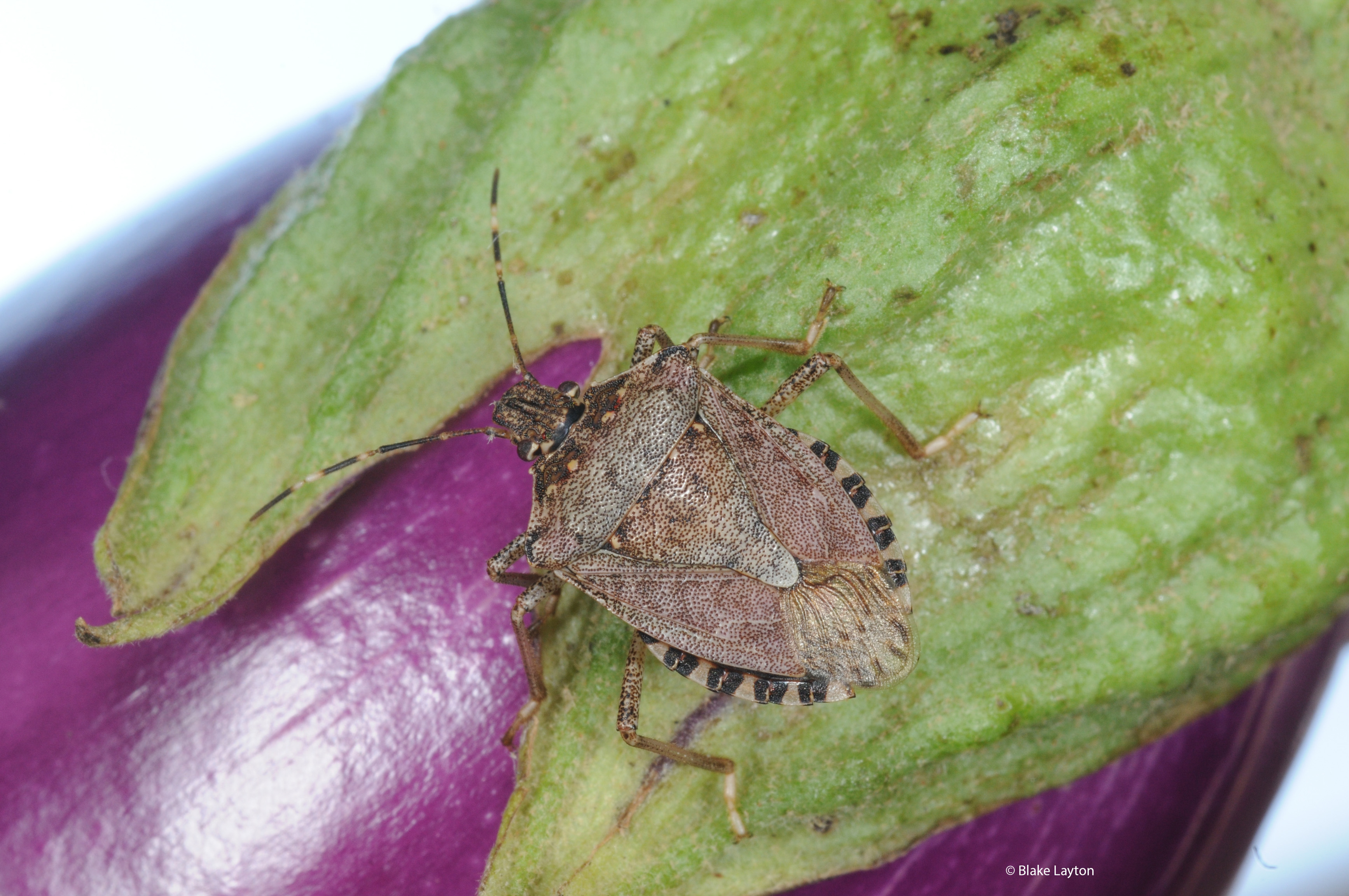Brown Marmorated Stink Bug Vol. 9, No. 23
Related News
April 11, 2013
April 2, 2013
March 14, 2013
February 28, 2013
 “We kept finding these smelly stink bugs in the house last fall—dozens and dozens! I vacuumed them up, but there always seemed to be more, especially in my husband’s man-cave, but also in the house. We had a few the year before but not as many. I grew up helping Momma pick and stomp stink bugs in the garden, some were green, and some were brown and looked a lot like these, but they never used to come inside like this. My neighbor had these in their RV last year as well. What is going on and how can we keep this from happening this fall?”
“We kept finding these smelly stink bugs in the house last fall—dozens and dozens! I vacuumed them up, but there always seemed to be more, especially in my husband’s man-cave, but also in the house. We had a few the year before but not as many. I grew up helping Momma pick and stomp stink bugs in the garden, some were green, and some were brown and looked a lot like these, but they never used to come inside like this. My neighbor had these in their RV last year as well. What is going on and how can we keep this from happening this fall?”
Brown marmorated stink bugs were first recognized as a new invasive species to the US in 2001, when they were found in Allentown, PA. Over the next few years their numbers spread, and they began to gain notoriety as vexing fall invaders. Northeastern news stations ran videos of exasperated homeowners vacuuming and sweeping stink bugs from their homes into buckets, sometimes enough to cover the bottom several inches deep. That’s a lot of stink bugs!
Since then, brown marmorated stink bugs have spread to at least 32 states, though they continue to be most numerous and problematic in Mid-Atlantic states. They were strangely slow to establish in the Deep South, and numbers are still low here, but they are becoming more common as fall invaders in some areas of North Mississippi.
Brown marmorated stink bugs look much like many of our native brown stink bug species, but there is a trait that can be used to identify them on close inspection. Check out the photo and notice those white bands on the antennae. None of our native brown stink bug species have these white bands. They differ in behavior also, especially in late fall when they seek to overwinter in buildings and other manmade structures, such as RVs, semi-truck trailers, and shipping containers (Ah! Now it is easy to see how these can move around the world so readily.). If you find dozens of stink bugs in your house this fall, you won’t need to look at the antennae to know what species they are.
Brown marmorated stink bugs are important pests of some agricultural crops, especially tree crops, such as apples, peaches, and pears. When they first appeared in numbers in Northeastern apple orchards, they caught many growers unaware, and caused high levels of late season fruit damage, which appears as sunken spots on the peel with corky brown areas in the flesh below. Growers now know they must spray for stink bugs later into the fall to avoid this problem.
Control: The most effective control for brown marmorated stink bugs and other fall insect invaders, such as multicolored Asian lady beetles and paper wasps, is to prevent them from getting into the building in the first place. Be proactive and take steps to make your home or building bug-proof before these fall invading pests begin looking for a warm, protected place to spend the winter. See Bug's Eye View No. 25 of 2017 and Bug-Wise No. 7 of 2014 for information on physical exclusion practices that are most helpful. Insecticides are of little use against such pests once they get inside. At this point physical removal, using a vacuum, broom and dustpan, or other means, is the best option.
Blake Layton, Extension Entomology Specialist, Mississippi State University Extension Service.
The information given here is for educational purposes only. Always read and follow current label directions. Specific commercial products are mentioned as examples only and reference to specific products or trade names is made with the understanding that no discrimination is intended to other products that may also be suitable and appropriately labeled.
Bug’s Eye View is now on Facebook. Join the Bug's Eye View Facebook group here.